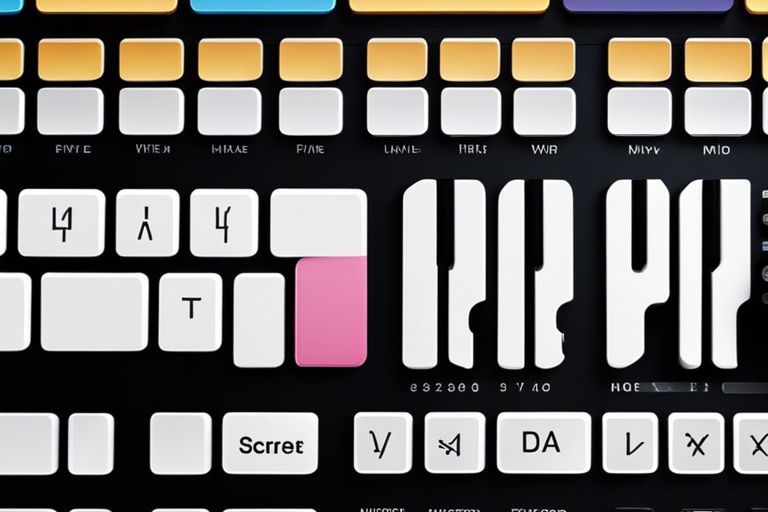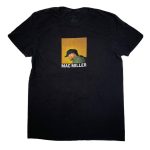So, you’ve ventured into the world of Mac and now you’re looking to capture the perfect screenshot. Whether it’s for sharing important information, keeping a record of an important conversation, or just capturing a moment, knowing how to take a screenshot on your Mac is an essential skill. With a few simple shortcuts, you can easily capture your entire screen, a specific window, or even just a portion of the screen. In this guide, we’ll walk you through the various methods for taking a screenshot on your Mac, as well as how to access and manage your captured images. By the end of this tutorial, you’ll be equipped with the knowledge to effortlessly capture any screen on your Mac with confidence.
How to Use Keyboard Shortcuts for Screenshots
As a Mac user, taking screenshots is an essential skill to have. Fortunately, Macs provide several keyboard shortcuts to make this process quick and easy.
Capturing the Full Screen
To capture the entire screen on your Mac, simply press Command + Shift + 3. This will take a screenshot of everything on your display, including multiple monitors if you have them.
To take a screenshot and save it to your clipboard instead of your desktop, add the Control key to the shortcut: Command + Control + Shift + 3.
Capturing a Specific Window
Any active window can be captured by pressing Command + Shift + 4. This will turn your cursor into a crosshair, allowing you to click on the window you want to capture. Once the crosshair changes to a camera icon, click on the desired window to take the screenshot.
This method is particularly useful when you want to capture a specific window without including the rest of the desktop in the screenshot. It’s a convenient way to focus on the details that matter.
Capturing a Selected Portion of the Screen
Capturing a specific portion of the screen is easy with the keyboard shortcut Command + Shift + 4. After pressing this combination, your cursor will turn into a crosshair, allowing you to click and drag to select the area you want to capture.
This is a handy feature when you only need to capture a selected part of the screen, such as a specific image or text.
How to Use Preview for Advanced Screenshot Options
Any Mac user can take advantage of the advanced screenshot options using Preview, which is a built-in app that comes with your Mac. With Preview, you can take screenshots, edit them, and save them in various file formats.
Create advanced screenshot options with Preview
Edit and save screenshots in Preview
Use Preview for advanced screenshot options
Taking Screenshots with Preview
Preview allows you to easily take screenshots of your entire screen, a selected portion, or a specific window. To take a screenshot, simply open Preview, click on “File” in the top menu, and select “Take Screenshot.”
Once you have taken the screenshot, it will appear in a new window in Preview, where you can make edits before saving it to your desired location.
Editing and Saving Your Screenshots
Screenshots can be edited and enhanced using Preview. You can add annotations, text, shapes, and even your signature to the screenshot. Once you are satisfied with the edits, you can save the screenshot in various file formats such as JPEG, PNG, or PDF, making it versatile for different uses.
Screenshots taken using Preview can be easily edited and saved in a user-friendly manner, providing flexibility and versatility for different use cases. Whether it’s annotating an image for work or simply enhancing a screenshot for personal use, Preview makes the process efficient and convenient.
Tips for Better Screenshot Management
After taking and saving multiple screenshots, it’s important to have a system in place to manage them effectively. Here are some tips to help you keep your screenshots organized:
- Label your screenshots with descriptive names to easily identify them
- Create folders to categorize your screenshots by topic or project
- Regularly delete any unnecessary screenshots to free up storage space
This will help you stay organized and efficient when searching for specific screenshots in the future.
Organizing Your Screenshots
Tips for organizing your screenshots include labeling your files, creating folders for different projects, and regularly deleting unnecessary screenshots to keep your storage space manageable and organized. By implementing these strategies, you can easily locate and access the screenshots you need when you need them.
Useful Third-Party Tools for Advanced Users
Screenshots can be enhanced and managed efficiently using third-party tools. Advanced users can benefit from tools such as Skitch, Greenshot, and LightShot. These tools offer additional features such as annotation, editing, and cloud storage integration, providing more flexibility and functionality for managing and using screenshots.
- Skitch: An advanced screenshot tool with annotation and editing features
- Greenshot: A powerful screenshot utility with editing capabilities and workflow integration
- LightShot: A screenshot tool that allows instant sharing and cloud storage integration
It is important to explore these third-party tools to enhance and maximize the utility of screenshots for advanced users. These tools offer additional functionalities and features that can improve the workflow and efficiency of working with screenshots.
Factors to Consider When Taking Screenshots
Keep in mind the following factors when taking screenshots:
- Resolution
- Quality
- Privacy and Sensitive Information
Thou, these factors play a crucial role in determining the effectiveness and appropriateness of the screenshots you take.
Resolution and Quality
Any screenshot you take should maintain a high resolution and quality. This will ensure that the content captured is clear and accurate. Whether you’re capturing an image, a web page, or an application interface, it’s important to consider the resolution and quality to avoid any distortion or blurriness in the screenshot.
Privacy and Sensitive Information
On a Mac, it’s important to be aware of the content you’re screenshotting, especially when it comes to privacy and sensitive information. Always check if there’s any personal or confidential data present in the screenshot before saving or sharing it. Inadvertently capturing and sharing sensitive information can have serious consequences.
Screenshots may contain sensitive data such as personal conversations, financial details, or private documents. It’s crucial to be mindful of the content you’re capturing and ensure that you’re not violating any privacy or security measures.
To wrap up
In conclusion, taking a screenshot on Mac is a simple and essential skill that can be easily mastered. By using the various keyboard shortcuts and built-in tools, anyone can capture their screen in just a few clicks. Whether it’s capturing the entire screen, a specific window, or a selected portion, Mac provides the tools to get the job done efficiently. By following these simple steps, users can quickly and effortlessly capture and save any important information visible on their screen.



